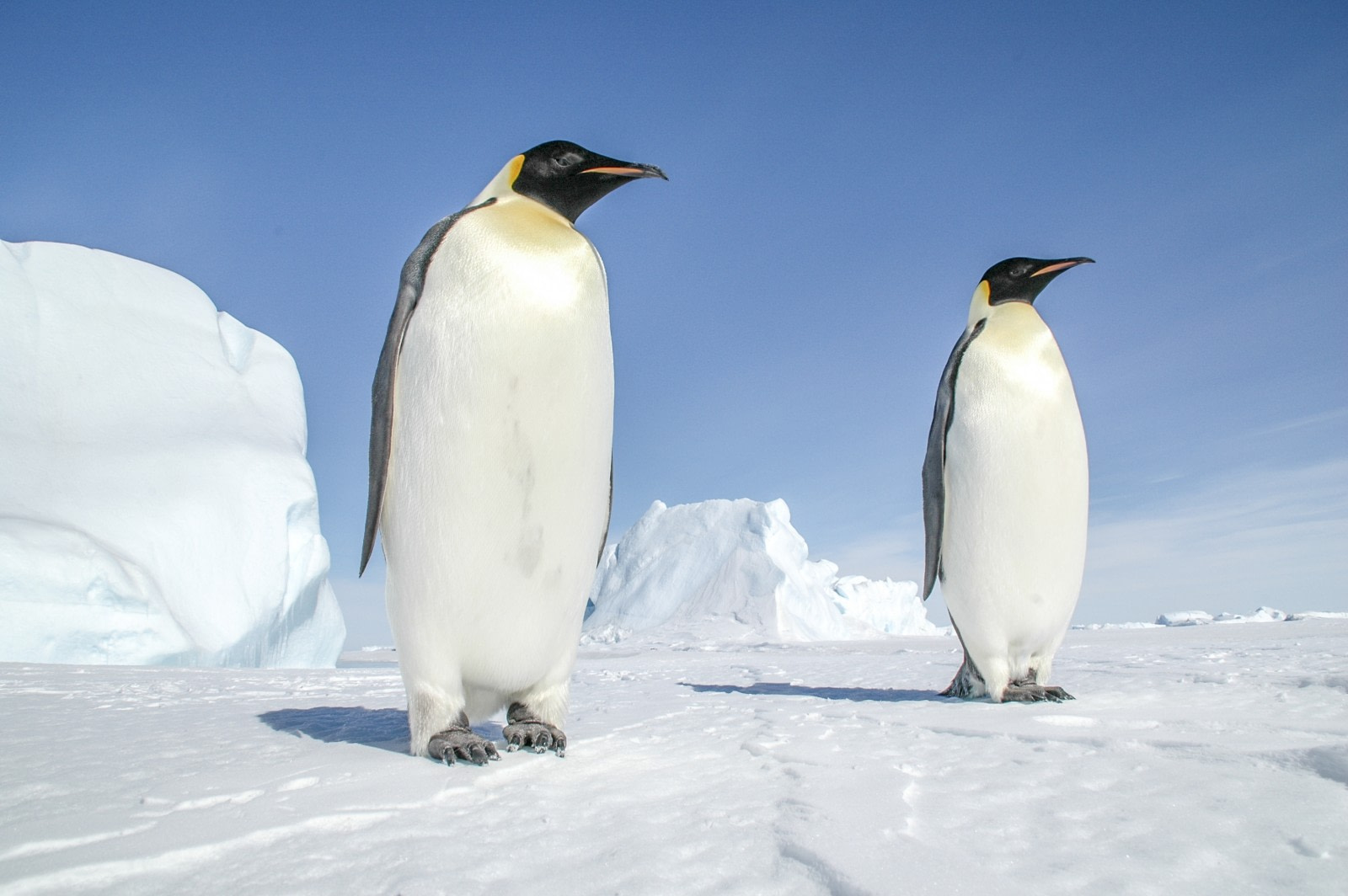
Emperor penguins are iconic creatures that have captured the hearts of people worldwide. These remarkable birds are the largest of all penguin species and are renowned for their resilience in the harsh Antarctic environment. From their striking appearance to their fascinating behaviors, emperor penguins are truly captivating creatures. In this article, we'll delve into 13 great facts about emperor penguins, shedding light on their incredible adaptations, unique social structure, and extraordinary life in one of the most extreme environments on Earth. Get ready to embark on a journey into the fascinating world of these regal birds, and prepare to be amazed by the remarkable traits that make emperor penguins such extraordinary creatures.
Key Takeaways:
- Emperor Penguins are the tallest and heaviest penguins, diving for 20 minutes and enduring -40°C temperatures. Their unique parenting, courtship rituals, and resilience make them captivating and inspiring creatures.
- Emperor Penguins captivate with their black and white plumage, exceptional swimming, and vocal communication. Their remarkable adaptability and dedication to breeding in the harsh Antarctic winter set them apart as iconic symbols of resilience.
Emperor Penguins are the tallest and heaviest of all penguin species.
These majestic creatures stand out with their impressive height, reaching up to 4 feet (1.2 meters) and weighing between 49 and 99 pounds (22 to 45 kilograms). Their remarkable stature allows them to thrive in the harsh Antarctic environment, where they navigate through icy waters with ease.
Emperor Penguins can stay underwater for around 20 minutes in a single dive.
Equipped with remarkable diving abilities, Emperor Penguins can plunge into the frigid waters of the Antarctic and remain submerged for extended periods. Their exceptional breath-holding capacity enables them to hunt for fish, squid, and krill at depths of up to 1,755 feet (535 meters) without needing to resurface for nearly half an hour.
These penguins form large colonies during breeding season.
Emperor Penguins gather in massive colonies, often consisting of thousands of individuals, to breed and raise their chicks. This communal approach provides them with warmth and protection against the harsh Antarctic climate, showcasing their remarkable adaptability and social behavior.
Emperor Penguins endure extreme temperatures as low as -40°C (-40°F).
Surviving in one of the harshest environments on Earth, Emperor Penguins showcase unparalleled resilience in withstanding sub-zero temperatures. Their thick layer of insulating blubber, dense plumage, and huddling behavior enable them to withstand the bone-chilling cold, exemplifying their exceptional adaptation to the Antarctic conditions.
Emperor Penguins embark on an incredible journey to breed.
Each year, Emperor Penguins undertake a remarkable journey to their breeding grounds, where they engage in courtship rituals and nesting activities. This awe-inspiring migration, characterized by their unwavering determination and instinctual behavior, underscores the remarkable nature of these iconic birds.
Emperor Penguin chicks have a unique survival strategy.
Born into the harsh Antarctic environment, Emperor Penguin chicks exhibit a remarkable adaptation to survive the extreme conditions. Their parents diligently care for them, shielding them from the cold and nurturing them until they are ready to embark on their own journey in the unforgiving Antarctic landscape.
Emperor Penguins have a distinctive black and white plumage.
Adorned with striking black and white feathers, Emperor Penguins boast a distinct appearance that aids in camouflage while swimming in the ocean. This iconic coloration serves as a natural form of protection, allowing them to blend seamlessly with the surrounding waters and evade potential predators.
These penguins are exceptional swimmers, reaching impressive speeds.
Emperor Penguins are renowned for their exceptional swimming prowess, effortlessly gliding through the icy waters of the Antarctic Ocean. Their streamlined bodies and powerful flippers enable them to reach speeds of up to 6-9 miles per hour (10-15 kilometers per hour), showcasing their remarkable agility and aquatic proficiency.
Emperor Penguins rely on vocal calls to communicate.
Communication plays a vital role in the social dynamics of Emperor Penguin colonies. These remarkable birds utilize a range of vocal calls, including distinctive braying sounds, to convey messages, maintain social bonds, and coordinate their activities within the expansive breeding colonies.
These penguins possess a unique courtship ritual.
During the breeding season, Emperor Penguins engage in a captivating courtship ritual that involves intricate displays of affection and bonding between mates. This enchanting display highlights the strong familial bonds and complex social interactions that contribute to the resilience of Emperor Penguin colonies.
Emperor Penguins exhibit remarkable parenting behavior.
Dedicated to ensuring the survival of their offspring, Emperor Penguin parents demonstrate exceptional parenting skills. From safeguarding their eggs in the harsh Antarctic winter to nurturing their chicks with unwavering care and warmth, these remarkable birds exemplify the profound dedication and resilience ingrained in their parental instincts.
Emperor Penguins are the only species to breed during the Antarctic winter.
Amidst the brutal Antarctic winter, Emperor Penguins defy the odds by embarking on their breeding journey, showcasing unparalleled determination and adaptability. This unique behavior sets them apart as the sole species to endure the extreme conditions of the Antarctic winter for the purpose of breeding and raising their young.
Emperor Penguins have captured the hearts of people worldwide.
With their awe-inspiring characteristics and captivating behaviors, Emperor Penguins have become iconic symbols of resilience and endurance in the face of adversity. Their remarkable journey, from the harsh Antarctic landscape to the heartwarming bond between parents and chicks, continues to inspire and fascinate people across the globe.
Emperor Penguins, the iconic inhabitants of the Antarctic, captivate the imagination with their extraordinary traits and remarkable survival strategies. These magnificent birds, adorned with striking black and white plumage, navigate the icy waters and endure the unforgiving Antarctic winter with unparalleled resilience. From their exceptional diving abilities to their intricate courtship rituals, Emperor Penguins exemplify the triumph of nature in one of the most challenging environments on Earth. As they gather in vast colonies, endure extreme temperatures, and embark on an incredible breeding journey, Emperor Penguins stand as a testament to the indomitable spirit of wildlife in the face of adversity. The captivating world of Emperor Penguins continues to intrigue and inspire, offering a glimpse into the extraordinary lives of these majestic creatures in the southernmost reaches of the planet.
Conclusion
In conclusion, Emperor penguins are truly remarkable creatures, perfectly adapted to thrive in the harsh Antarctic environment. Their incredible parenting skills, unique physical features, and astounding survival instincts make them a captivating species to study and admire. By delving into their fascinating behaviors and biological adaptations, we gain a deeper understanding of the intricacies of the natural world. As we continue to protect their habitats and promote conservation efforts, we ensure that future generations can also marvel at the awe-inspiring resilience and beauty of the Emperor penguin.
FAQs
What do Emperor penguins eat?
Emperor penguins primarily feed on fish, squid, and krill, which they hunt for in the frigid waters of the Antarctic.
How do Emperor penguins stay warm in the extreme cold?
Emperor penguins have several remarkable adaptations to survive in the harsh Antarctic climate. Their dense layer of feathers, thick blubber, and huddling behavior all contribute to their ability to endure the freezing temperatures.
Emperor Penguins' remarkable lives have inspired countless nature enthusiasts, filmmakers, and curious minds alike. If you found yourself captivated by their incredible story, why not explore more fascinating penguin-related content? From the award-winning documentary "March of the Penguins" to the adorable antics of baby penguins, there's always more to learn about these beloved birds. So, keep your curiosity piqued and dive deeper into the world of penguins – you never know what amazing facts await!
Was this page helpful?
Our commitment to delivering trustworthy and engaging content is at the heart of what we do. Each fact on our site is contributed by real users like you, bringing a wealth of diverse insights and information. To ensure the highest standards of accuracy and reliability, our dedicated editors meticulously review each submission. This process guarantees that the facts we share are not only fascinating but also credible. Trust in our commitment to quality and authenticity as you explore and learn with us.


